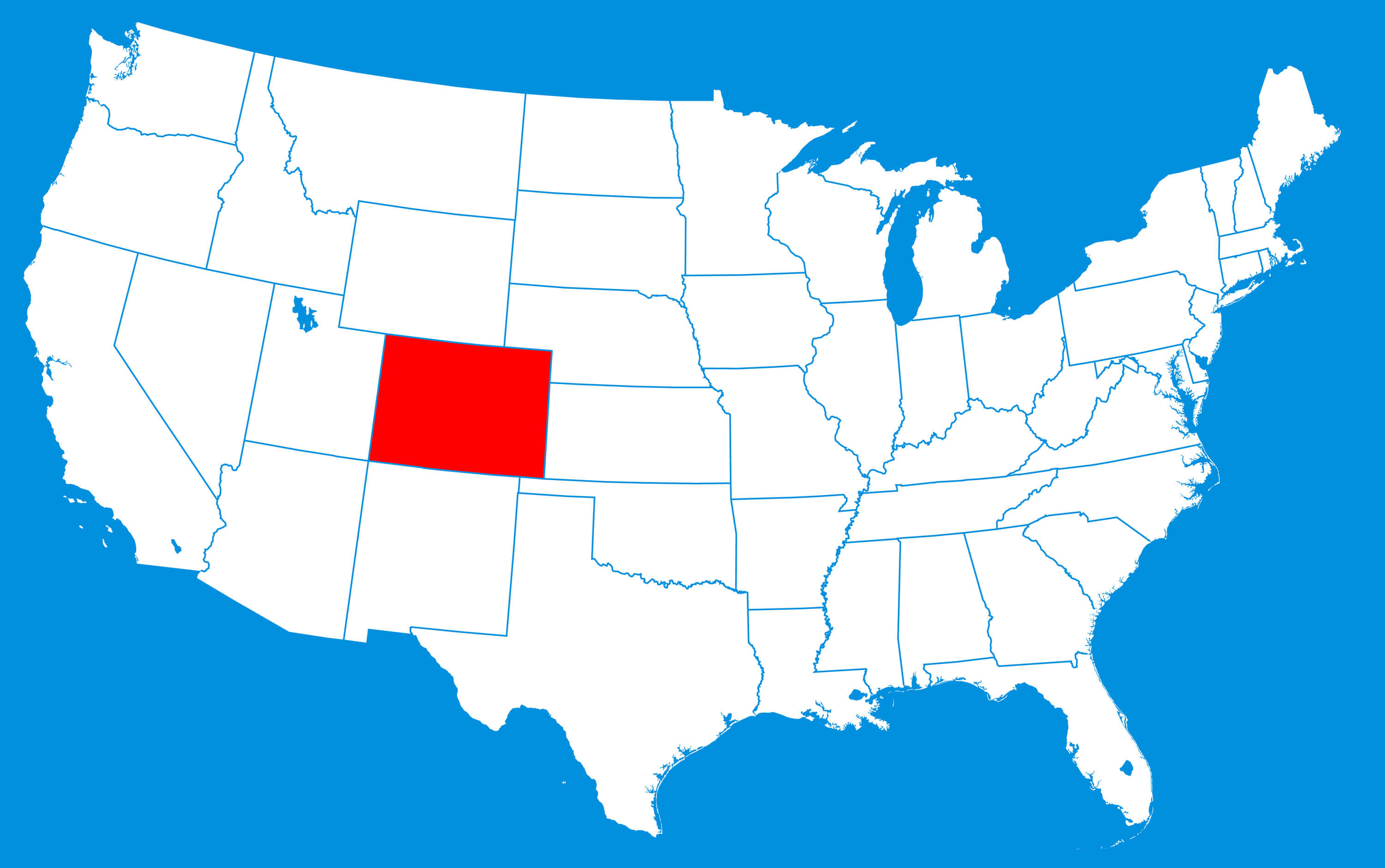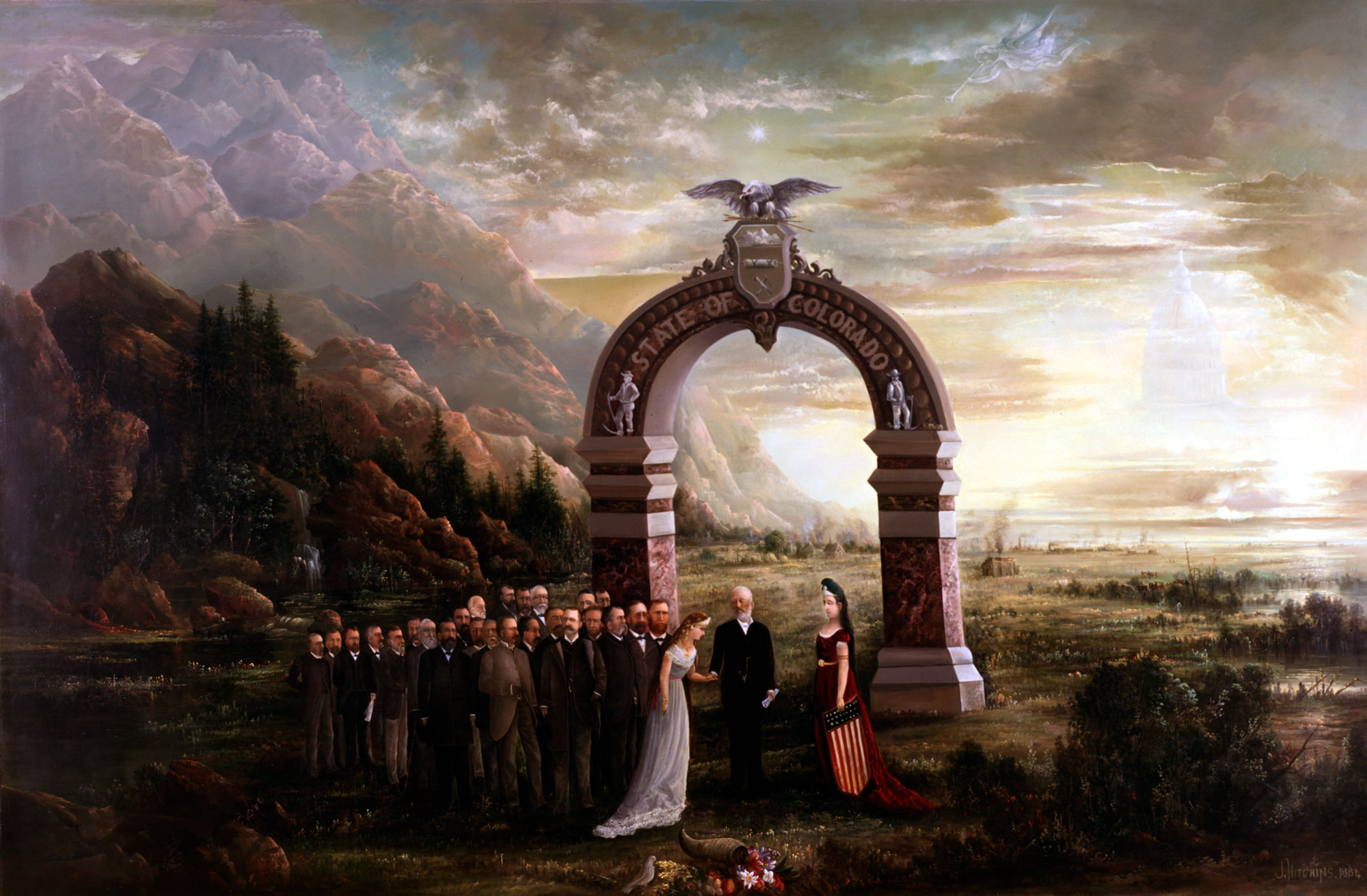Imagine a land of towering mountains, vast plains, and sparkling rivers – a land that was once home to Native American tribes and later, explorers seeking fortune and a new life. This is the essence of Colorado, a state that embodies the spirit of the American West. But when did this majestic landscape officially become part of the United States? When did Colorado, with its rich history and breathtaking beauty, earn its place as the 38th state in the Union?

Image: www.guideoftheworld.com
The answer, as you might suspect, is not as straightforward as a simple date. The tale of Colorado’s statehood is woven with threads of exploration, conflict, settlement, and ultimately, the desire for self-determination. It’s a journey that spans over a century, a journey that truly began long before the year 1876, the year we often associate with Colorado’s statehood.
Before Statehood: A Tapestry of Discovery and Conflict
From Indigenous Lands to Spanish Influence
The land that we now know as Colorado was once home to various Native American tribes, including the Ute, Arapaho, Cheyenne, and Comanche. These tribes had a deep connection to the land, living in harmony with its resources and traditions. The arrival of European explorers, particularly Spanish conquistadors, marked a dramatic shift in the region’s history. In the 16th and 17th centuries, Spanish expeditions ventured into the area, claiming it for the Spanish Crown. This period saw the establishment of settlements, the introduction of livestock, and the exploration of trade routes, shaping the early landscape of Colorado.
Exploration, Fur Trade, and the Pike’s Peak Gold Rush
The 18th and 19th centuries brought waves of European exploration and settlement. In 1806, Zebulon Pike, for whom Pikes Peak is named, led an expedition through the area, further solidifying American interest in the region. The fur trade became a significant economic activity, attracting trappers and traders to the area. However, it was the discovery of gold near Pikes Peak in 1858 that truly triggered a surge of immigration. The Pike’s Peak Gold Rush transformed the region, drawing thousands of prospectors seeking fortune, pushing westward and creating a diverse multicultural society.

Image: www.historycolorado.org
The Path to Statehood: A Journey of Struggle and Triumph
Territorial Status and the Fight for Self-Governance
The influx of settlers made it clear that territorial government was necessary. In 1861, Congress established the Territory of Colorado, marking a significant shift in the region’s political landscape. However, the journey to statehood was not without its challenges. Despite the growing population and economic activity, the territory faced hurdles, including questions of political representation and the desire for self-determination.
The Challenge of Native American Rights and the Question of Slavery
The struggle for statehood was intricately tied to the complex issues of the time: the rights of Native American tribes, the debate over slavery, and the impact of the Civil War on the nation. The Indian Appropriations Act of 1851, which sought to confine Native American tribes to reservations, had a significant impact on the region. The issue of slavery also fueled tensions, as Colorado’s potential admission into the Union was subject to the delicate balance of power between pro-slavery and anti-slavery states.
Political Compromise: Charting a Path to Statehood
After years of debate, a political compromise emerged. In 1864, Congress passed a bill granting Colorado territorial status with the condition that a state constitution be drafted and approved. This marked a crucial step towards self-governance for Colorado and a symbolic victory for those who had championed the territory’s right to statehood.
The Dawn of a New Era: Colorado Becomes a State
The 1876 Constitutional Convention: A Defining Moment
The year 1876 was a pivotal one for Colorado. The territory hosted a constitutional convention, where delegates from various communities convened to draft a constitution that would govern the future state. This convention laid the groundwork for Colorado’s political and social systems, reflecting the values and aspirations of its people. The proposed constitution outlawed slavery, ensuring Colorado joined the Union on the side of freedom and progress.
August 1, 1876: A Milestone in Colorado’s History
On August 1, 1876, President Ulysses S. Grant signed the proclamation granting Colorado statehood, a momentous occasion that marked the beginning of a new era for the region. The announcement was met with jubilant celebrations, reflecting the pride and sense of accomplishment felt by the people of Colorado. This date, etched in history, solidified the state’s place in the Union and marked the official beginning of Colorado’s journey as a state.
Beyond Statehood: A Legacy of Achievement and Transformation
From Frontier Territory to a Modern-Day State
The journey from a frontier territory to a modern state involved significant transformation. The early years of Colorado’s statehood were marked by infrastructure development, including the construction of railroads, which spurred economic growth and increased connectivity. The discovery of silver and other mineral resources further contributed to the state’s prosperity. The late 19th and early 20th centuries saw the establishment of industries, growth in population, and the development of educational institutions, laying the foundation for the Colorado we know today.
Embracing Diversity and Preserving Heritage
Colorado’s identity has been shaped by its diverse population, including Native American communities, pioneers, immigrants, and generations of residents who have contributed to the state’s cultural richness. The state has strived to preserve its heritage while embracing its evolving character. From the vibrant arts scene in Denver to the stunning natural landscapes that attract outdoor enthusiasts, Colorado has become a destination that celebrates its heritage and embraces innovation.
A Look Ahead: Challenges and Opportunities
Despite its accomplishments, Colorado faces challenges as a state. Issues such as environmental sustainability, economic disparities, and the need to address the impact of climate change require thoughtful policy decisions and collaborative efforts. However, Colorado’s spirit of resilience, its commitment to innovation, and the dedication of its people offer hope for a future that continues to build on its rich legacy.
What Year Did Colorado Become A State
Conclusion: The Enduring Spirit of Colorado
The year 1876 marks a significant milestone in Colorado’s history, but it’s important to remember that the state’s story goes far beyond a specific date. It’s a story woven with threads of discovery, resilience, and the enduring spirit of a people who have forged a unique identity in a land of extraordinary beauty and opportunity. Whether you are a native Coloradan or a visitor drawn to its captivating landscapes, the story of Colorado invites you to reflect on the journey that led to its statehood, a journey that continues to inspire and shape the future of this remarkable state.





